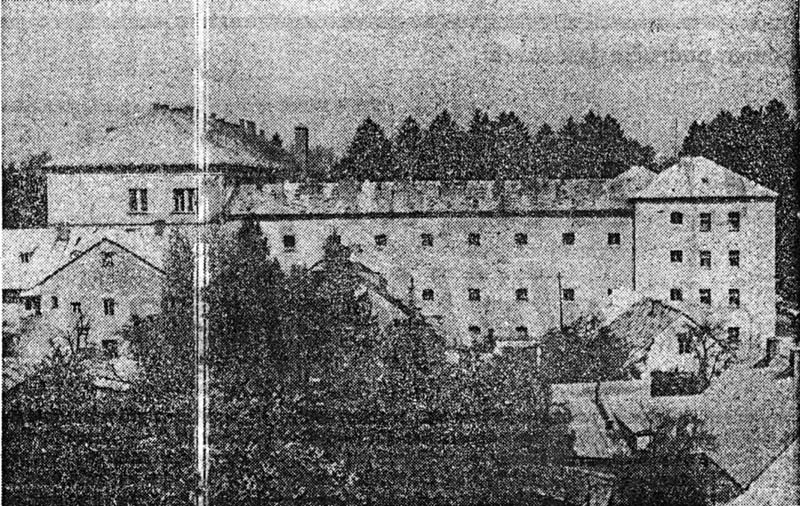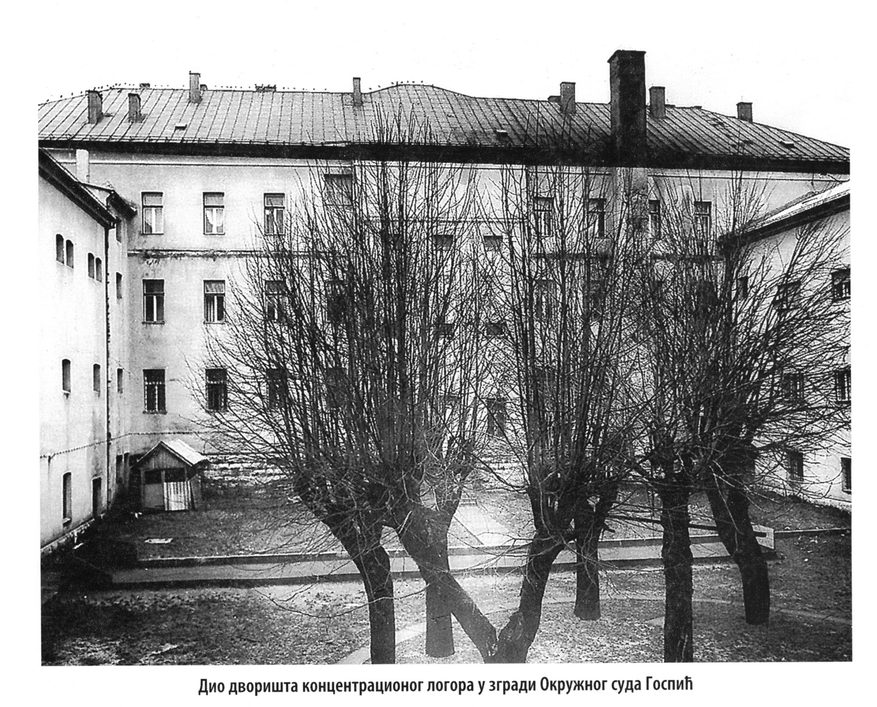Period:
Second World War
Region:
Lika
The Croatian (Ustasha) camp Complex- Gospić-Jadovno-Pag 1941
The Camp Gospić-Jadovno-Pag was a part of Ustashe’s complex of concentration camps on the territory of Lika and Velebit foothills, and it was the first mass execution site in NDH (Independent State of Croatia)
It was established shortly after the formation of the concentration camp Danica (near Koprivice), in April 1941.
Mostly Serbs and Jews were brought into this camp.
The director of this camp was Ustasha Stjepan Rubinić, and the warden of the prison was Milan Staraček. Besides them, other important people were Juca Rukavina and Janko Mihailović.
This Ustasha camp operated for 132 days until 20th August 1941, when Ustasha formed the camp Jasenovac in Western Slavonia.
Here 40,000 innocent victims were killed, of whom 90% were Serbs.
BACKGROUND
The Kingdom of Serbs, Croats, and Slovenians, the first South Slavic state, later renamed into the Kingdom of Yugoslavia, was created after the First World War, with its promulgation on December 1, 1918, in Belgrade. The territory of the Yugoslav Kingdom was divided into banates in 1929 and the structure of its government was a parliamentary monarchy.

Proclamation of the first South Slavic state
The royal title was held by the Serbian Karadjordjević dynasty. It consisted of Southern Serbia, Šumadija, Raška, Kosovo and Metohija, Eastern Serbia, Montenegro, Bosnia and Herzegovina, Vojvodina, Slavonija, a small part of Dalmatia, the Dubrovnik Republic, Lika, Kordun, Banija, Zagorje, Gorski Kotar, and Slovenia.
After the assassination of King Alexander I Karadjordjević in Marseilles on October 9, 1934, the country was ruled by regents: Prince Paul Karadjordjević, Dr. Radenko Stanković, and Dr. Ivo Perović, and the government was formed by Dragiša Cvetković and Vlatko Maček.

Belgrade's demonstration on March, 1941.
In the mid-1930s, Europe witnessed the rise of Nazism and Fascism, especially in Germany, Italy, and Spain. This led to the formation of the Tripartite Pact, on September 27, 1940, between Germany, Italy, and Japan. In the next months, this alliance was joined by the following countries: Hungary, Bulgaria, Romania, Albania, etc. Thus, the Kingdom of Yugoslavia found itself surrounded by Axis Powers.
In Vienna, on March 25, 1941, the signing of the protocol between the Kingdom of Yugoslavia and Nazi Germany took place regarding the passage of German and Italian troops through Yugoslav territory. Among the patriotic forces of the Kingdom of Yugoslavia, this was interpreted as treason, and the British and Soviet intelligence officers organized a military coup and demonstrations on March 27, 1941 in Belgrade resulting in the overthrow of the governorship led by Prince Paul and putting on the throne a minor king Petar II Karadjordjević.
Hitler changed the plans and the armed forces' plans to attack Greece, were diverted to the Kingdom of Yugoslavia.
[[ENprethodnicaYU41a]]
ESTABLISHMENT
Immediately after the declaration of the Independent State of Croatia, Ustasha occupied the penitentiary of the District Court in Gospić, also known under the name “Gerhit”, and as early as 11 April 1941, they started imprisoning Serbs from the area of Gospić, and its surroundings.
Five weeks after the Italians left, Ustasha took over the whole area and used it as prisons for the smaller part, and largely as a camp, which was named in formal documents as “Concentration Camp Gospić”.
In the beginning, it held Serbs and Jews exclusively, but later, communists from the Lika area, as well.
From early June 1941, cattle wagons had brought Serbs from all areas of NDH, who were locked in these dungeons of death, and later taken to Velebit mountain in groups, where they were killed and thrown into deep karst pits (35-65 meters).
Prisoners were housed in groups of 25 to 30 per cell, penitentiary hallways, and prison yards with a daily capacity of 3,000 people.
This capacity was insufficient for the intentions of the Ustasha’s state, which is why they formed the camp Jadovno on Velebit, the camps Slana, and Metajna on the island of Pag, the collective camp called Maksimović’s stables (Ovčar), a gathering place on the railway station Gospić, and an auxiliary camp Stupačinovo near Baška Oštarija.
According to the data and statements of several surviving inmates, from 20 July until 19 August 1941, 25,000 inmates were transferred to Velebit from the Gospić dungeon.

DIRECTORS AND TORTURERS
Commander of the Gospić camp was manager of the Župan Police Directorate in Gospić Stjepan Rubinic, the warden of the prison was Milan Staraček, while the warden of the prison for political enemies was Ustasha’s lieutenant Janko Mihailović.
17th and 22nd Ustasha battalions secured the camp under the command of Juce Rukavina, who conducted mass terrors and executions.
CAMP CONDITIONS
The Gospić group of camps and its security were forerunners for the Ustasha’s complex camps Jasenovac.
Jasenovac was established in late August of 1941, and its first inmates were surviving inmates brought from Gospić in cattle wagons the area (Zone II).
It operated from 11th April until the 20th August 1941. After closure, this place would, later on, become a symbol of Ustashe’s killings in the factory of death- Jasenovac.
EXECUTIONS
According to statements of the small number of surviving inmates, several columns of prisoners were taken daily towards Velebit and Karlobag, in lines of two.
Their hands were tied by wires, and there was a chain between them going through the entire column. They were assigned for Velebit, usually transported by trucks and one bus to the town of Trnovac, and from there, they walked towards the Jadovno camp.
During this journey, the prisoners were beaten and molested, and many of them had never reached the camp. They were killed in karst abyssal pits along the way.
Male inmates were taken towards Stupačinovo and Slana, they walked from the Gospić penitentiary. Imprisoned women and children were taken by trucks to Karlobag, and from there on ships, so-called braceras (designed for transporting sand) towards the camp Metajna, the first camp for women and children in World War II.
NUMBER OF VICTIMS
There are many estimates of the total number of victims of the camp in Gospić, but they do not vary as much as they do regarding the number of victims in Jasenovac. The estimates are usually based on the testimonies from the victims, as well as Ustaha’s sources.
The estimates vary between 15,000 and 80,000 victims.
Croat Marko Pirsen, the author of the book “Ustasha Camps”, estimated that the total number of victims of Gospić camp and death site was between “15 and 25 thousand”. According to the statements of the director of the Županija Police Directorate in Gospić, Stjepan Rubinić, which he gave to Ilija Jakovljević in the camp of Stara Gradiška, at least 24,000 prisoners were executed in the complex of Ustasha camps Gospić-Jadovno-Pag.
However, from the perspective of history science, the more reliable are the discoveries of the experienced researcher Dr. Djuro Zatezalo. He established that in the complex of Ustasha camps Gospić-Jadovno-Pag, 40,123 inmates were killed just in 132 days of its existence.
Some publications give numbers of victims specifically for the Gospić camp, and surroundings of Gospić, and the pit on Velebit where inmates were killed and thrown.
STATEMENTS OF SURVIVORS
After the war, statements of several dozens of survivors were given to the Committee for War Crimes or, during the war, in front of the Commissariat for Refugees and Immigrants that collected them. Statements are held in the archive of the Military-Historical Institute. Some of the statements and testimonies regarding the Ustasha camps were published in books and inmate documents.

The part of the Concentration Camp Garden of the District Court of Gospić
Drago Sjetličić was brought into Gospić penitentiary on the 9th of August 1941, with a large crowd of inmates, because “in that time – at the end of August– rivers would pour inmates into Gospić and towards Jadovina, large butcher sites of innocent people” – J. Blazevic, book P, 75/.
On 24th August, he found himself tied and transported to Velebit together with around 900 Serbs, but on that same day, he says, Italians arrived in Gospić and ordered the termination of further transports to Jadovno, so the last group of inmates from Gospić were taken by train to the Jasenovac camp, where Svjetličić later managed to escape and arrive in Serbia.
Parts of the statement of Djuro Medić from Slavonski Brod, inmates from camp in Gospić
(source- Antun Miletić, book 1, document 85, pp. 231):
“We stayed in Gospić penitentiary for only 17 days, that is until 20 of August 1941. During this time, there was daily transportation of new Serbian prisoners coming in from all areas. Between 700 and 1,000 newcomers were arriving daily, and at the same time, a similar number of inmates were transported from the penitentiary to Velebit.
The Penitentiary in Gospić was only a gathering place and a temporary station for all Serbs who were assigned for Velebit and Pag. The majority of Serbs who were brought by transports were bloody, with broken arms and legs, broken skulls, many stabs, and many other visible wounds on faces and bodies.
So I remember that a Serbian transport from administrative units of Višegrad and Zenica came into the penitentiary – between 80 and 100 people all beaten and bloody with all kinds of wounds.
Three transportations of Serbs from the penitentiary to Velebit took place daily. In each transport, there were 200-300 people, so 700-1,000 people were taken to Velebit every day. Serbs that were assigned for Velebit with hands tied with wires, in row two by two, and in a long chain were chased on foot to Velebit.
Neither of these Serbs has ever returned, nor anyone has heard of them”.
Parts of the statement of Milan Stamenković from Osijek, (Source – Antun Miletić- book 1. Document 42, page 109-113):
“In Gospić we have seen 1,500 arrested Serbs in the jail of the district court, some of whom were housed in jail’s rooms and some in the prison yard on the ground. Transportation was organized from Gospić for Pag, Velebit, and Jadovno on Velebit.
Transportation took place daily with groups of around 300-400 people and more, depending on the number of detainees they brought to Gospić.
As far as I know, 400-500 Serbs were coming into Gospić daily, and after one or two months, as soon as 1,000 people were gathered, transportation was organized for the aforementioned places Pag, Velebit, and Jadovno”.
YEARS LATER
Years later after World War 2, the communist regime forbade talking about atrocities done upon Serbs because Broz’s Yugoslavia was built on ideals of brotherhood and unity, with the argument that these stories may disturb relations between the Yugoslav peoples.
Besides that, the orders on sealing every pit in which Serbs were thrown into were spread and executed in the late 50s and early 60s of the 20th century, about which Dane Lastavica from Lika village of Krš, near Kosinje has testified and written several books about it.

Nevertheless, people (relatives of those who died) started to gather around Velebit pits in the late 1970s and hold religious memorial ceremonies. This is how it was until the beginning of the 1990s when the civil war broke out in Croatia.
It was not before the early 21st century that several patriots and historians started visiting the pits on Velebit and to search for bones of the murdered, miserable victims. Later, a community called “Jadovno 1941” was formed in Banja Luka in late 2009, to show the horrors of Ustasha to the public in NDH (Independent State of Croatia) during World War II.
In 2011, they started a pilgrimage in which the participants would visit the pits on Velebit and mark them with an honorary cross. Besides that, in several cities around Europe and North America, there was an exhibition called “My Jadovno”.

PUBLICATIONS
The capital project “Jadovno” that deals with the system of Ustasha’s complex camps Jadovno-Gospić-Pag was written by Djuro Zarezalo in 2 volumes with a list of over 10,000 Serbs who were killed there.
In Summer 2018, The Association “Jadovno 1941” filmed a documentary called “Cross over a pit”, which deals with the camp, the association, pilgrimage, etc…
Besides these, many other Serbian patriots and societies have filmed short films regarding the pilgrimage and posted them on social media platforms.
Tags:
INDEPENDENT STATE OF CROATIA
|
|
|
|
|
|
|
|
|
|
|
|
|
| | | | |
Please, vote for this article:
Visited: 3852 point
Number of votes: 10
|